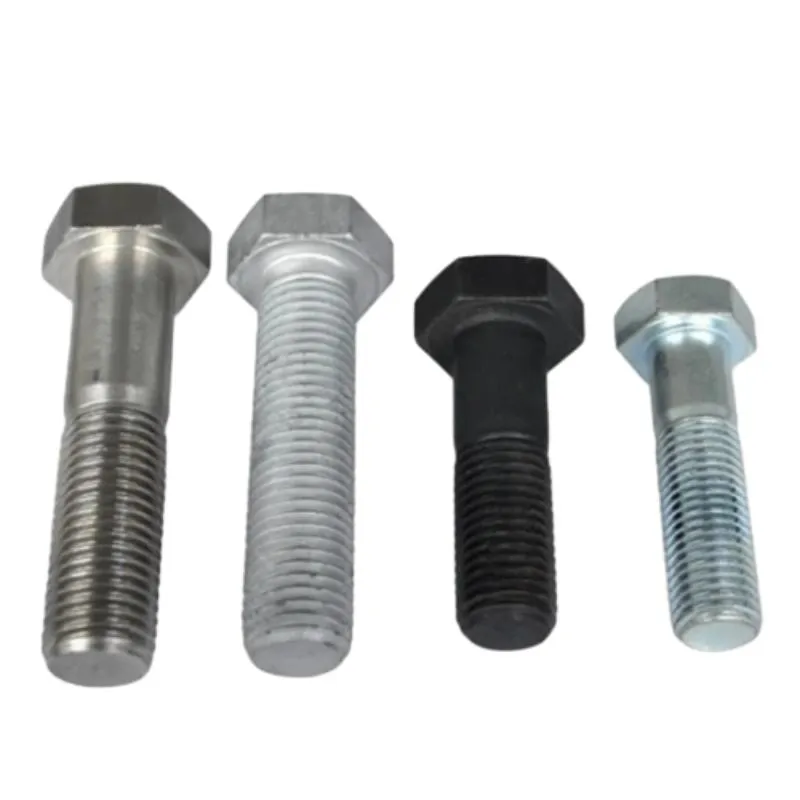авг. . 09, 2024 22:10 Back to list
Exploring the Benefits and Applications of Threaded Studs in Modern Engineering and Construction Techniques
Understanding Threaded Studs A Practical Perspective
Threaded studs are an essential component in various engineering and construction applications. These fasteners, which resemble bolts without a head, are utilized to secure two or more objects together, facilitating a strong and reliable connection. Their design and functionality make them suitable for numerous uses across different industries, including automotive, construction, and manufacturing. In this article, we will explore the types, applications, advantages, and installation techniques of threaded studs.
Types of Threaded Studs
Threaded studs can be classified based on different factors, predominantly their thread types and manufacturing materials. The most common types of threads include coarse and fine threads. Coarse threads are typically used in applications requiring quick engagement, making them ideal for larger components that need to be assembled or disassembled frequently. Fine threads, on the other hand, provide a higher level of tensile strength and are advantageous in installations where precision is paramount.
Materials also play a critical role in the effectiveness of threaded studs. They are manufactured from various materials, including steel, stainless steel, and aluminum. Steel studs are known for their strength and durability, making them a popular choice in heavy-duty applications. Stainless steel studs are resistant to corrosion, making them suitable for environments exposed to moisture or chemicals. Aluminum studs are lightweight and offer excellent resistance to oxidation, making them ideal for applications where weight savings are crucial.
Applications of Threaded Studs
Threaded studs are employed in an array of applications. In the automotive industry, they are commonly used to attach components like engine parts, suspensions, and wheels. Their strength and reliability are vital for ensuring vehicle safety and performance. In the construction industry, threaded studs are often part of structural components, such as connecting beams or securing fixtures to concrete or masonry.
Additionally, threaded studs find usage in manufacturing, especially in assembly lines where parts must be tightly secured yet easily removable for maintenance or replacement
. They also play a significant role in the development of machinery and equipment across a range of sectors, including aerospace, marine, and industrial operations.threaded stud

Advantages of Using Threaded Studs
One of the primary advantages of threaded studs is their simplicity and ease of use. Unlike traditional nuts and bolts, threaded studs allow for quick assembly and disassembly without the need for additional components. This feature can significantly save time and labor costs during installation.
Moreover, threaded studs provide a strong clamping force and are less prone to loosening due to vibration, which is especially important in high-stress environments. The design of threaded studs also allows for load distribution, which enhances their reliability and effectiveness in maintaining the integrity of assembled structures.
Installation Techniques
Installing threaded studs requires careful consideration to ensure optimal performance. Pre-drilling is essential for accuracy, especially in hard materials. It is crucial to select the right length of the stud, as an inadequate length can lead to insufficient engagement while an excessive length may cause unnecessary stress on the material.
During installation, it is recommended to use appropriate torque specifications as stated by the manufacturer. This practice will help prevent over-tightening, which could lead to material failure or deformation. Threaded studs can be installed using various methods, including welding and adhesives, depending on the specific application and requirements.
Conclusion
Threaded studs are a vital element in modern engineering and construction, offering numerous advantages for various applications. Understanding their types, applications, and installation techniques can significantly enhance the effectiveness of their use. As industries continue to evolve, the development of more advanced threaded stud designs and materials is sure to play a critical role in the future of fastening technology.
-
The Ubiquitous Reach of DIN934 in Application Realms
NewsMay.16,2025
-
Exploring Different Bolt Types
NewsMay.16,2025
-
Cracking the Code of Sleeve Anchor Mastery
NewsMay.16,2025
-
Clamp Design Principles,Types and Innovations
NewsMay.16,2025
-
Artistry Inspired by the Humble Anchor Bolt
NewsMay.16,2025
-
A Deep Dive into Screw Types
NewsMay.16,2025


